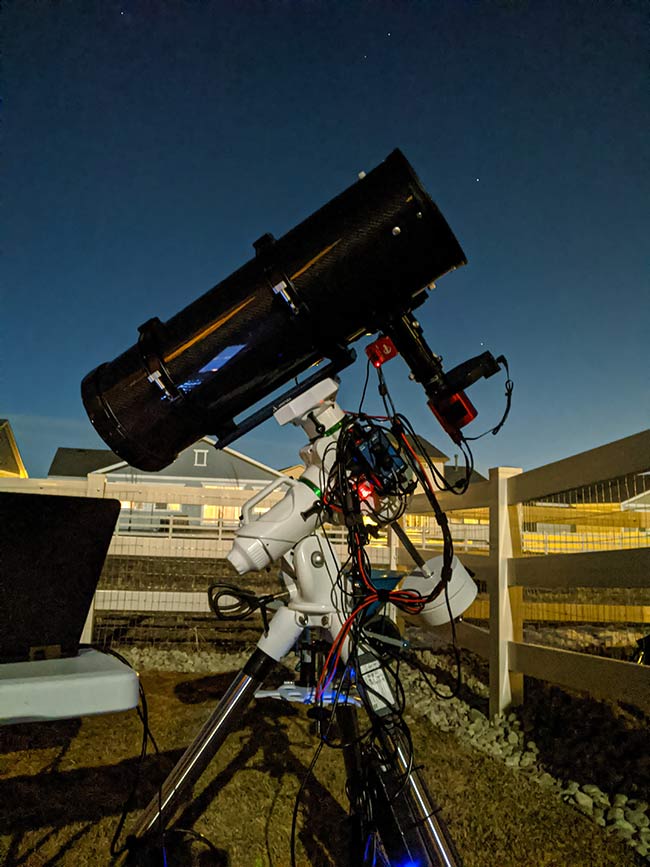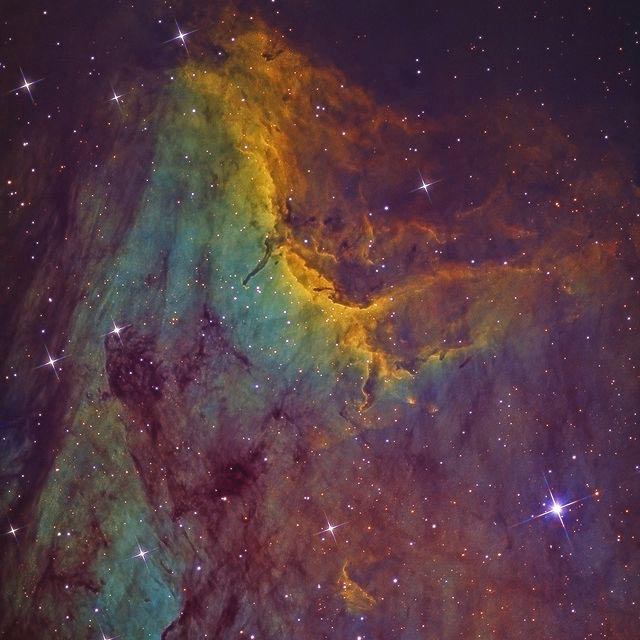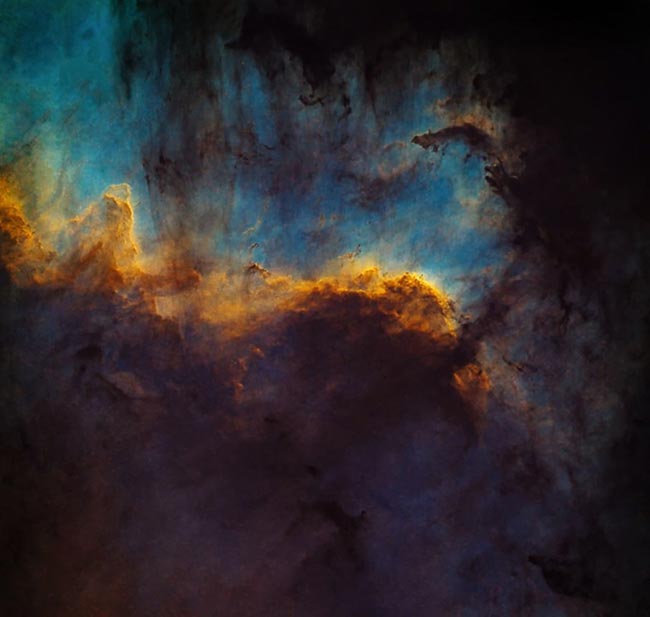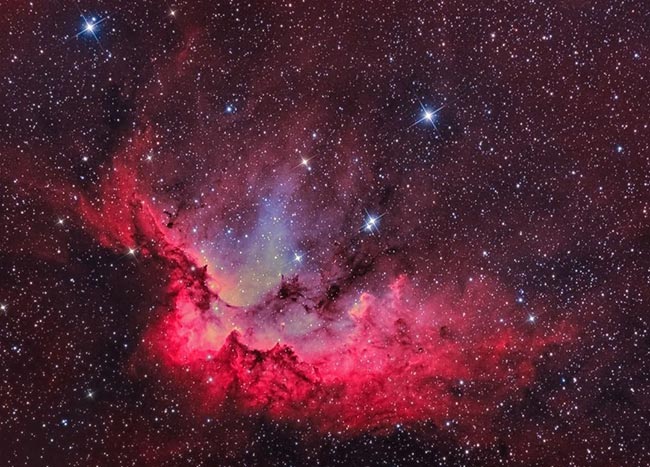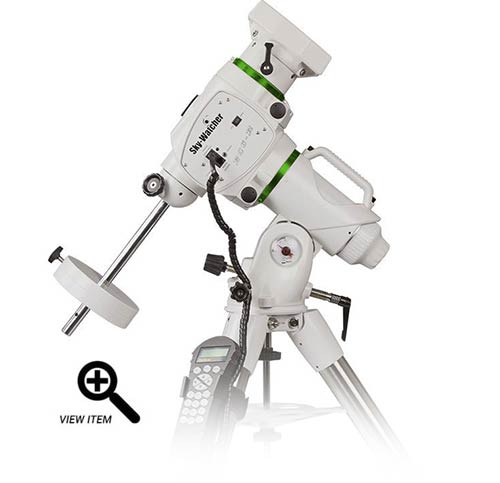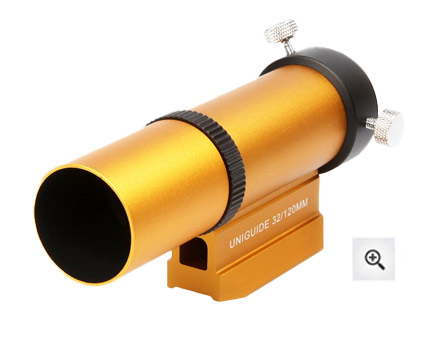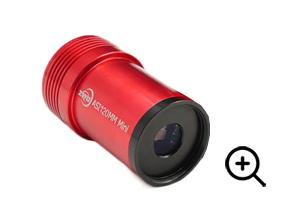Backyard of the Week | August 9, 2021
The AstroBackyard Backyard of the Week highlights astrophotography setups from around the world. A “backyard” can be a balcony, driveway, garden, or wherever else you set up astrophotography equipment at home.
By taking a behind-the-scenes look at the equipment amateur astrophotographers use to take deep-sky images, you can get a better understanding of the process.
This week’s backyard astrophotography equipment profile comes to us from Thomas Lease in the United States.
Location: Colorado, United States
Take one look at Thomas’ Instagram account, and you will quickly realize he has a knack for image processing. His grid is full of colorful, dynamic images of nebulae and galaxies.
But image processing skills can only take you so far. You must first master the image acquisition process, and this is where the right astrophotography equipment comes into play.
I know owners of mirrored telescopes will enjoy this one. Tom uses a ‘light bucket’ (8″ Newtonian Reflector) to capture deep-sky objects from his backyard in Colorado.
Thomas Lease
Tommy’s Instagram is a feast for the eyes. Here, you’ll find an impressive assortment of some of the most incredible nebulae regions in the night sky.
Take note of the varying color palettes Tommy uses, and how he manages to consistently produce creative portraits that reveal common objects in an interesting way.
Tommy Lease (colorado_astro) on Instagram.
You’ll also notice that Tommy is no stranger to setting up a new deep-sky imaging configuration.
It’s hard to keep up with all the changes he’s made to his primary imaging rig since he originally made his Backyard of the Week submission.
For this feature, we’ll focus on the equipment profile Tommy submitted back in April 2021.
The Pelican Nebula by Thomas Lease.
Thomas’ Equipment
| Primary Imaging Camera | ZWO ASI1600MM Pro |
| Primary Imaging Telescope | Explore Scientific N208CF Newtonian |
| Telescope Mount | Sky-Watcher EQ6-R Pro |
| Filter | Antlia SHO 3nm |
| Guide Scope | William Optics 32mm |
| Guide Camera | ZWO ASI120mm Mini |
| Camera Control Software | NINA, Stellarium, Sharpcap Pro, PHD2 |
| Accessories |
What does Thomas love most about his gear?
“I love how fast the f/4 scope is. I also love that I can do polar alignment, then finish all my imaging from inside the house using the AnyDesk app on both laptops for remote control.”
A telescope with F/4 optics certainly provides an advantage when it comes to collecting photons. This allows Tommy to collect more light in each exposure over a ‘slower” optical system in the F/6 range.
A Newtonian reflector is a great choice for astrophotography if you are up to the task of maintaining its performance (collimation) on a regular basis.
The Cygnus Wall (starless) by Tommy Lease.
The Camera
Tommy uses a ZWO ASI1600MM-Pro dedicated CMOS astronomy camera to photograph nebulae and galaxies from his backyard. This cooled monochrome camera has been a favorite in the astro-community for several years now.
The ASI1600MM Pro has a micro 4/3″ sensor with a maximum resolution of 4656 x 3520 pixels. This 16MP CMOS sensor has a pixel size of 3.8 microns, providing sharp images at a convenient imaging scale for most telescopes.
The ZWO ASI1600MM Pro Dedicated Astronomy Camera.
A monochrome astronomy camera has a few advantages over a one-shot-color model. Without filtering the light into RGB channels at the time of collection, a stronger signal can be obtained in a single exposure.
This is especially handy when investing hours into a narrowband imaging project that requires several hours’ worth of exposure time through each filter.
The Wizard Nebula by Tommy Lease.
The Filters
Tommy uses Astrodon LRGB filters for his full-color projects. He collects images with the ASI1600MM Pro (monochrome) through each color filter, to complete an RGB image.
For narrowband projects, Tom uses Antlia 3.5nm SHO filters. I’ve not used Antlia filters myself, but I see more and more talented astrophotographers using this brand and producing great images each year.
Antlia 3nm H-Alpha Filter (50mm).
When choosing astrophotography filters, make sure you order the correct size and format for your system. A large unmounted circular filter like the one shown above will fit securely inside a filter wheel with 50mm openings.
The Telescope
The Explore Scientific N208CF 8″ f/4 Newtonian reflector is a discontinued product, but there are many alternatives available (such as the Orion 8″ Astrograph and the Sky-Watcher Quattro).
This telescope collects light with a large 8″ aperture, at a blazing fast F/3.9. The carbon fiber tube is said to have low expansion characteristics, which can help hold focus over a long period of time.
The Explore Scientific N208CF 8″ f/4 Newtonian Reflector.
Explore Scientific 8″ Newtonian – Carbon Fiber
- Type: Newtonian Reflector
- Diameter: 80 mm
- Focal Length: 812 mm
- Focal Ratio: f/4
- Weight: 22 lbs (9.9 kg)
The Telescope Mount
The Sky-Watcher EQ6-R Pro is a capable equatorial telescope mount for a wide range of deep-sky astrophotography configurations. The EQ6-R Pro can handle a heavier payload than the more portable Sky-Watcher HEQ5 Pro.
Tommy’s large 8″ Newtonian Astrograph and camera equipment is not a problem for this intermediate-level astrophotography mount. It looks like Tom did not need to add any additional counterweights to the system to achieve balance.
The Sky-Watcher EQ6-R Pro Mount.
The Guide Scope
If you’re looking for a guide scope that adds virtually no additional weight to your setup (and you don’t want an OAG), the Williams Optics Uniguide 32 is a great solution.
This miniature guide scope will accept your 1.25″ guide camera and allow you to autoguide an imaging telescope of up to about 800mm.
The Guide Camera
The ZWO ASI120MM guide camera is one of the most affordable ways to get your autoguiding system up and running. I personally use this camera all the time, and its never let me down.
ZWO ASI120MM Mini.
Accessories
- Astrozap Dew Heaters
- Pegasus Mini Power Box
Thank you for sharing your backyard astrophotography set up with us, Thomas! You can view Thomas’ astrophotography on Instagram.
Be sure to fill out the form to submit your backyard for a chance to be featured, and don’t forget to include your Instagram handle to help grow your following.
View the Backyard of the Week Archives
